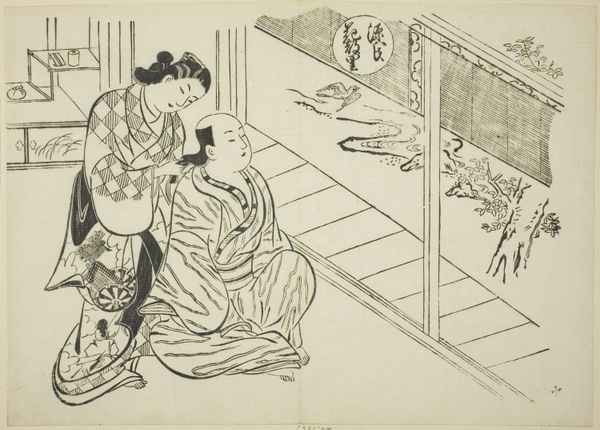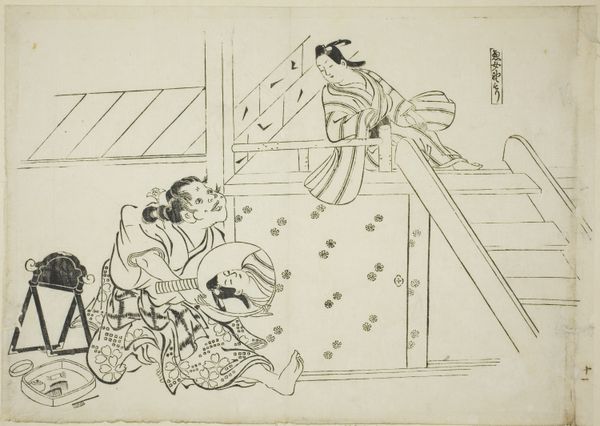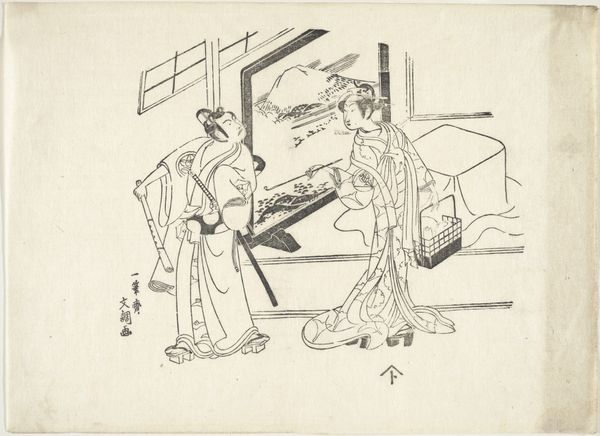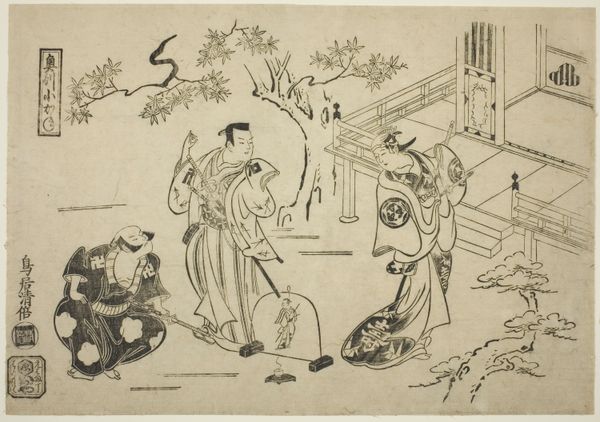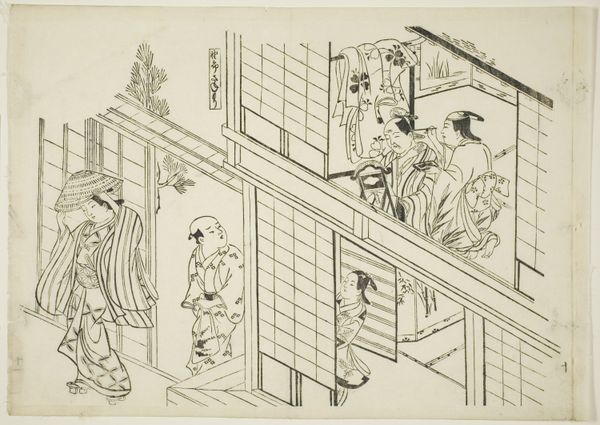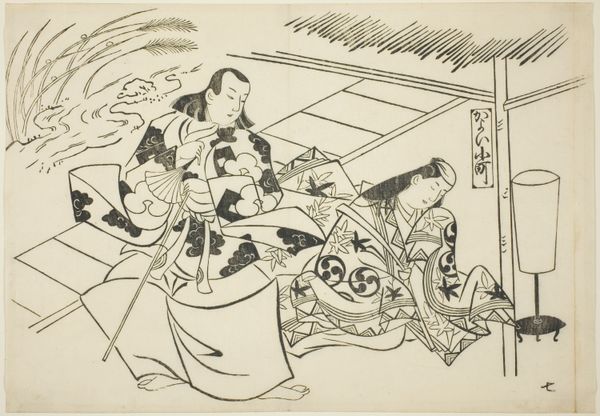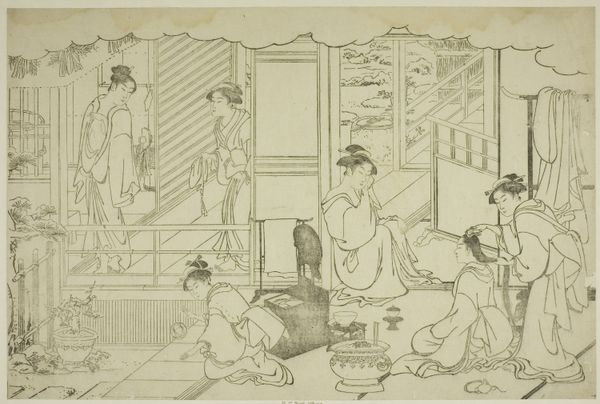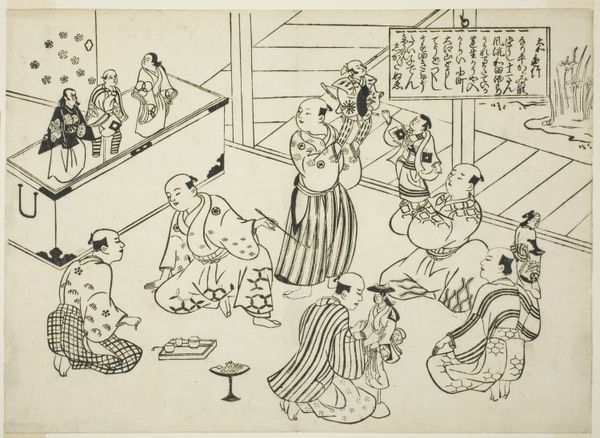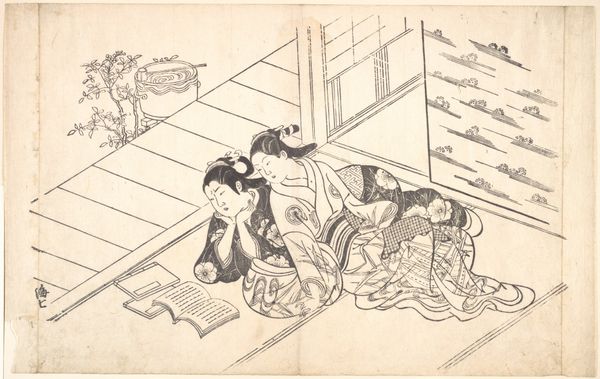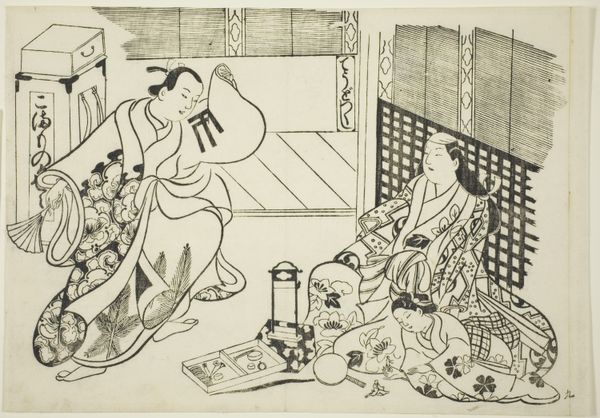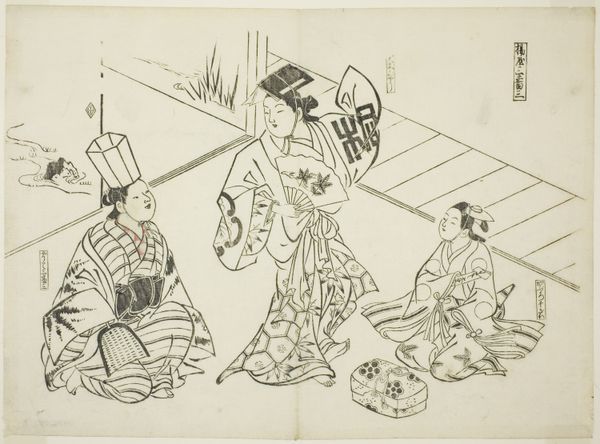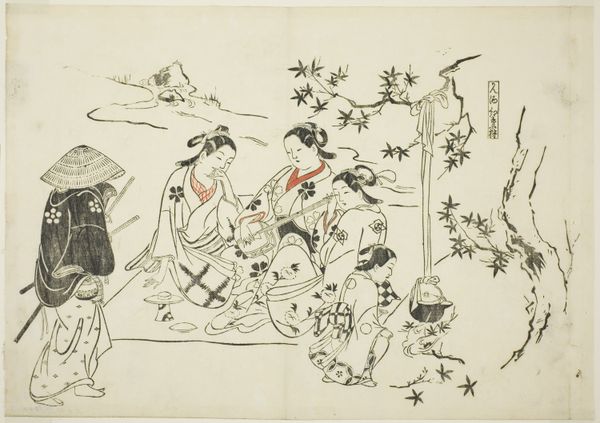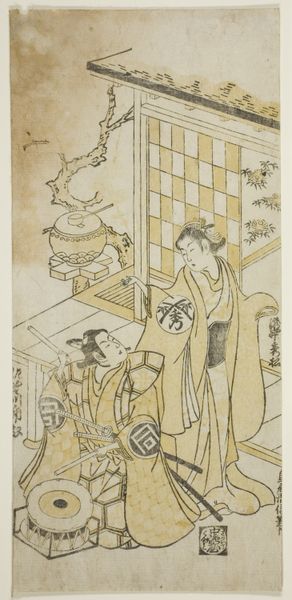
The Actors Nakamura Takesaburo I as Kewaizaka no Shosho and Ichikawa Danjuro II as Soga no Goro dressed as a komuso in the play "Bando Ichi Kotobuki Soga," performed at the Nakamura Theater in the first month, 1715 1715
0:00
0:00
print, woodblock-print
#
portrait
# print
#
asian-art
#
ukiyo-e
#
japan
#
figuration
#
woodblock-print
#
genre-painting
Dimensions: 11 5/16 × 16 3/4 in.
Copyright: Public Domain
This woodblock print by Torii Kiyomasu I, made in Japan in 1715, depicts actors in the play "Bando Ichi Kotobuki Soga." Kiyomasu's image is an early example of ukiyo-e, a genre that flourished in the Edo period. Ukiyo-e, or "pictures of the floating world," captured the ephemeral pleasures of urban life, particularly the theater and the courtesan districts. Woodblock prints democratized art, making it accessible to a broader public. The Nakamura Theater, where the depicted play was performed, was itself a vital social institution, a space for entertainment, gossip, and the display of fashion. Here, the artist portrays celebrated actors, elevating them to celebrity status. The exaggerated poses and stylized costumes are visual codes that would have been easily recognized by contemporary audiences. This print, then, tells us not only about the play itself but also about the social and cultural values of Edo-period Japan. To fully understand this artwork, we might delve into theater history, study costume design, and explore the printmaking techniques of the time. These resources help us understand the social and institutional contexts that shaped the creation and reception of ukiyo-e prints.
Comments
No comments
Be the first to comment and join the conversation on the ultimate creative platform.
